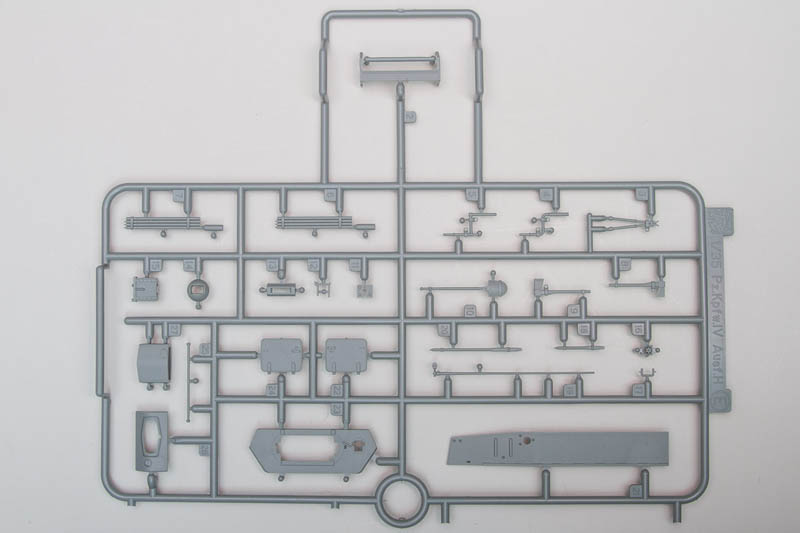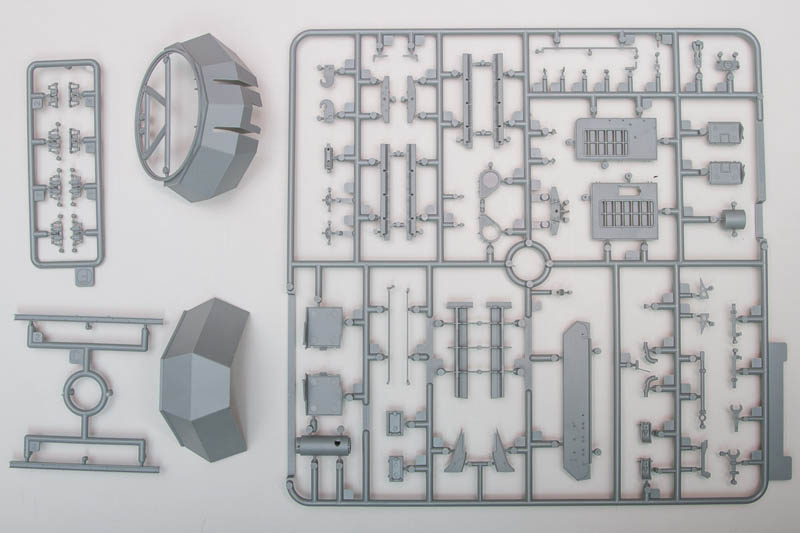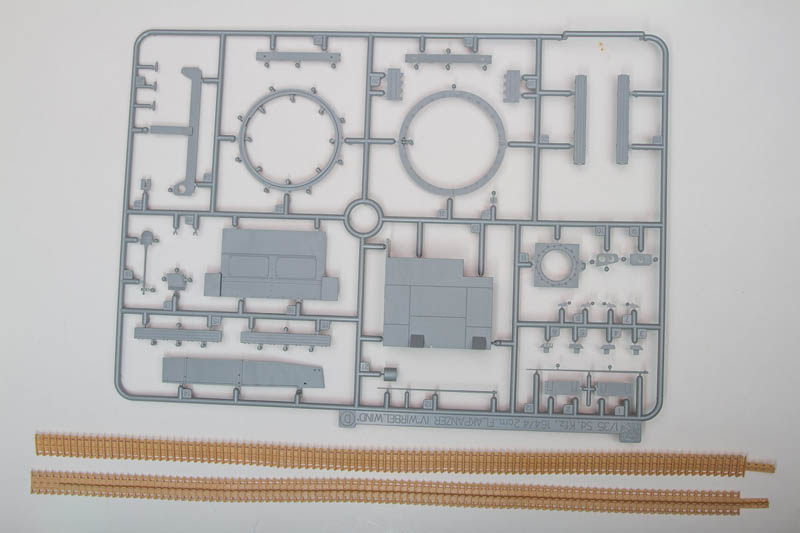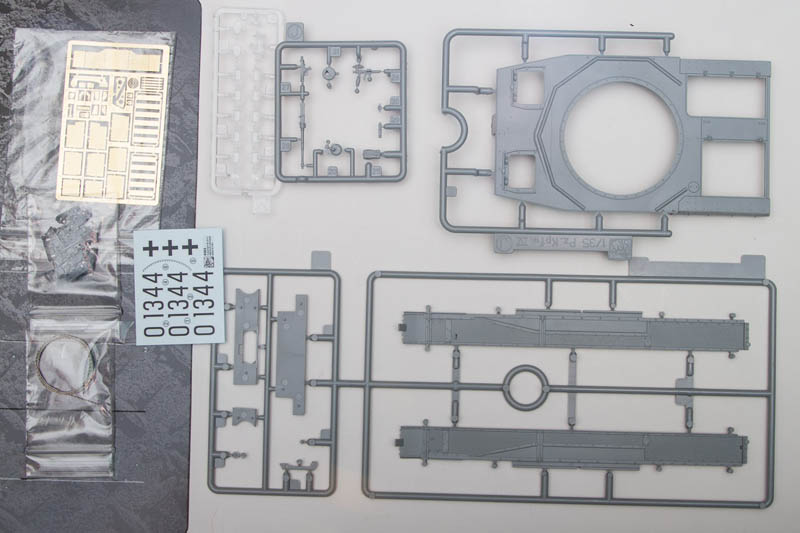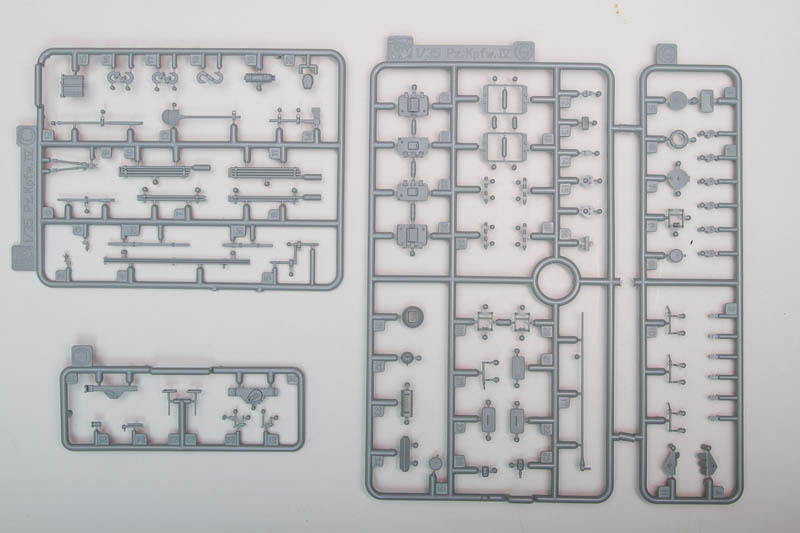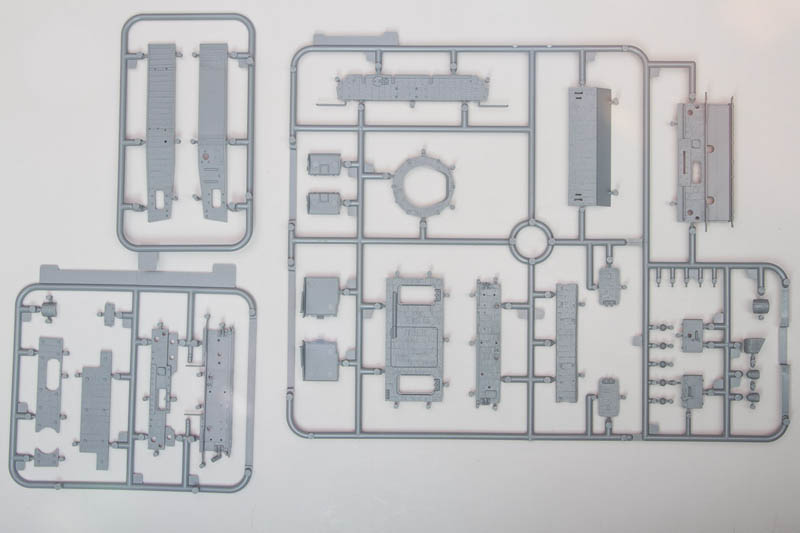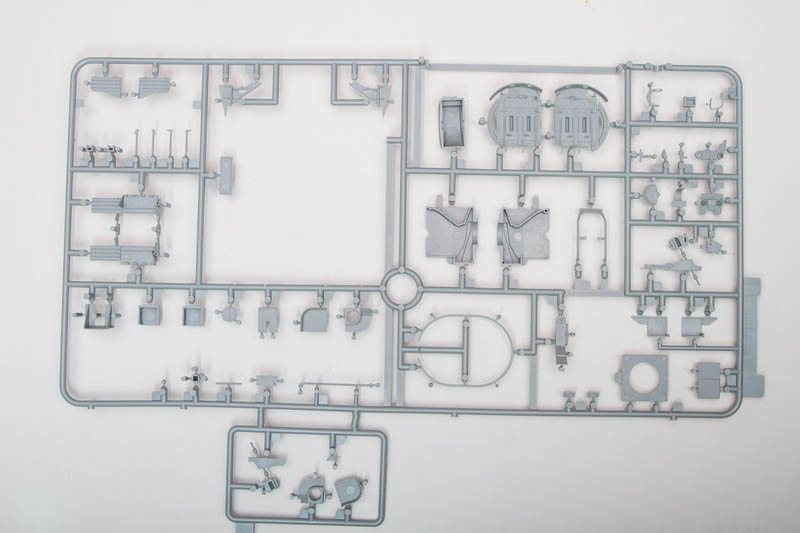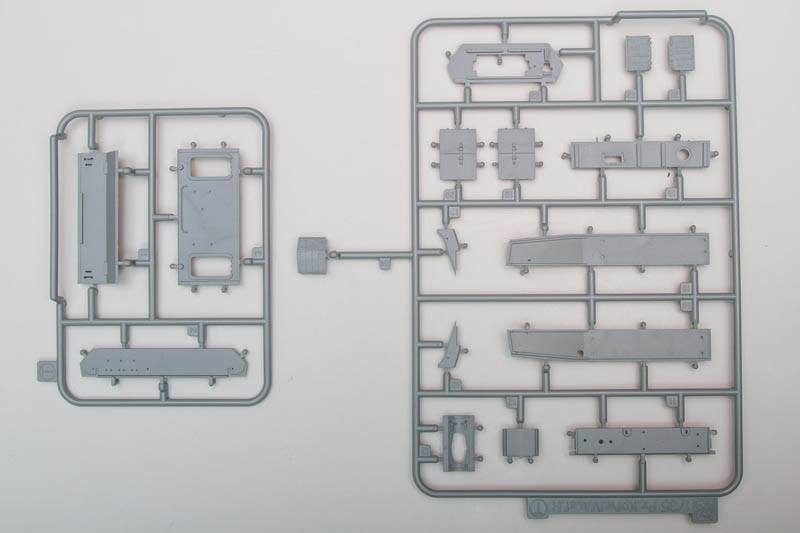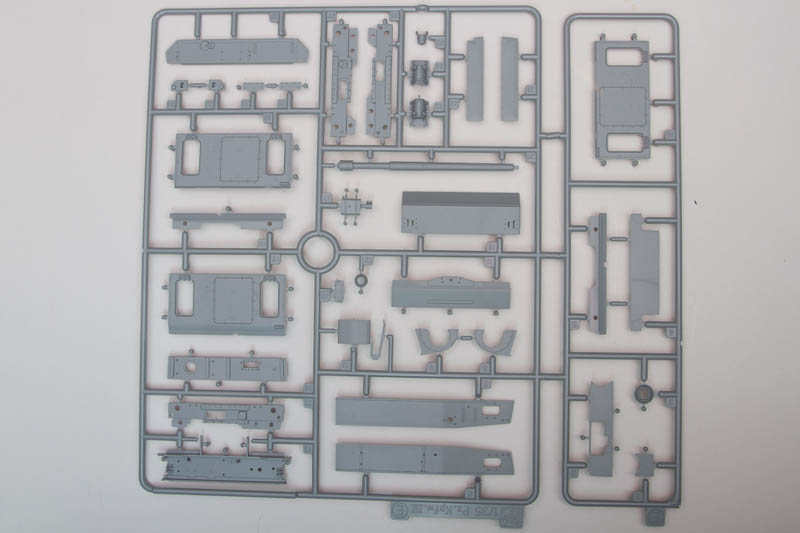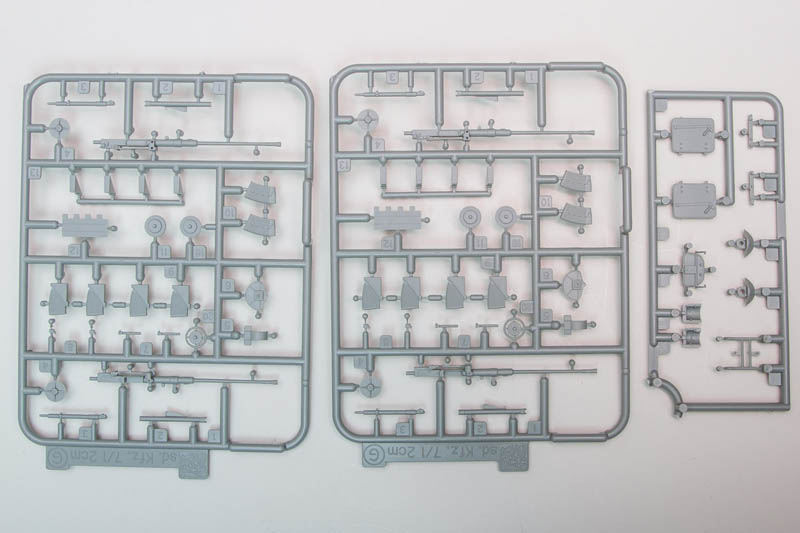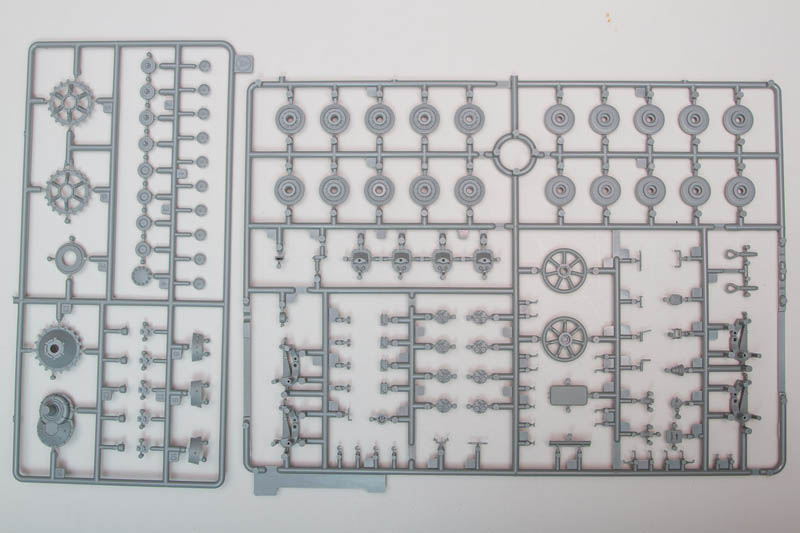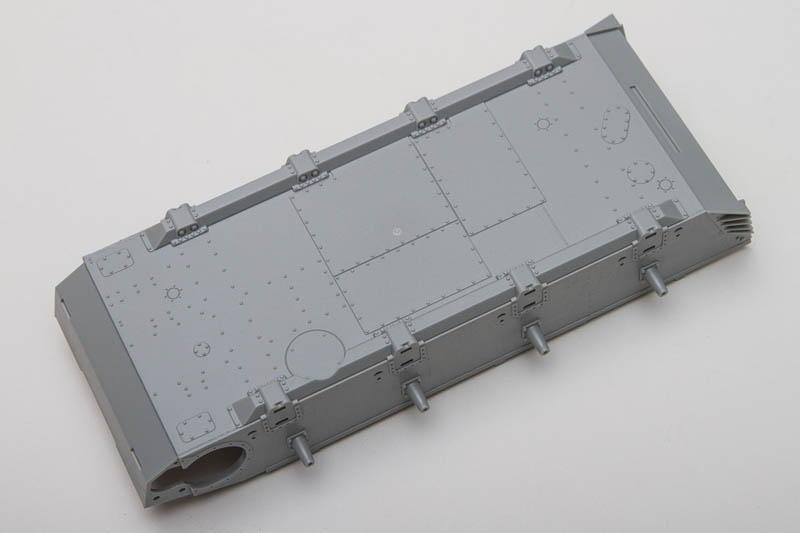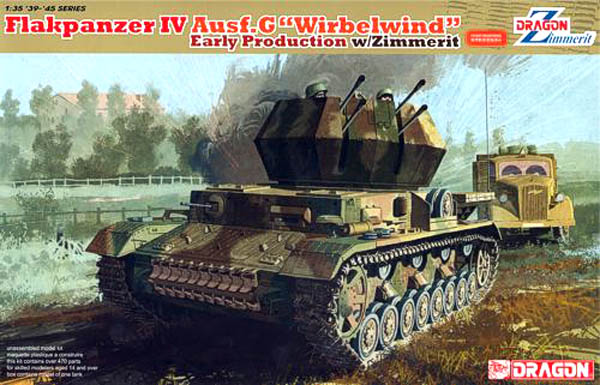
Dragon 1/35 Flakpanzer IV Ausf. G “Wirbelwind” Early Production w/ Zimmerit
By Andrew Birkbeck
Kit: 6565
MSRP: $54.95
The Vehicle History
According to
In the early stages of WW2, German forces dominated the skies over the battlefields, with Ju 87 dive bombers striking terror into the hearts of opposing soldiers as they screamed out of the skies, and unleashed their deadly loads. Meanwhile, Bf 109’s patrolled the skies above, keeping enemy aerial counter attacks at bay. Thus the initially designed anti aircraft gun platforms were devoid of any armor protection for their operators, and none was required. However, starting in 1942 on the North African front, German forces began to meet much improved Allied forces, both in manpower and material. The Afrika Korps forces began to come under heavy and sustained Allied aerial attack, including the convoys attempting to resupply the German forces from ports in
Initially, some units received vehicles based on the Panzer 1, but the extra weight of the armor and gun platform overstressed the mechanical components. Besides, by the time these vehicles were produced, production of the Panzer 1 had ceased, as had production of the Panzer II, due to their outdated designs, so thoughts of using these went nowhere. Use of the Panzer III chassis was rejected, as any spare Panzer III chassis and Panzer III production facilities were soon turned over to the production of Sturmgeschutz III, badly needed to help counter the threat of the Soviet T-34, which had come as a real “surprise” to the Germans after their invasion of the
The first Panzer IV chassis anti aircraft gun platform was the “Mobelwagen” (“furniture van”!!), which mounted a 2cm Flakvierling 38 and was produced in early 1944. The gun and crew were surrounded by four armored side plates, but these needed to be lowered to allow the gun a 360 degree field of fire. Thus the crew was fully exposed to incoming enemy fire. Another drawback with the Mobelwagen was that it took a considerable amount of time to get the vehicle prepared for action. Since one never knew when a swarm of enemy fighters or fighter bombers might appear, this was a real design failing.
The Mobelwagen, as with earlier designs for mobile anti aircraft gun platforms during WW2, was designed by the Generalluftzeugmeister/Flak (GL Flak/E 4), which was governed by men with an artillery background. However, early in 1944, responsibility for the design of mobile flak platforms passed from this group, to that headed by General Guderian, Inspector General of the Panzertruppen/In 6. This new group came up with new design specifications for future Flakpanzers, which included the requirement that future vehicles have fully traversable armored turrets.
Meanwhile, in France………….As luck would have it, the commander of a flak unit of SS-Panzer Regiment 12, 12th Panzer Division, Untersturmfuhrer Karl Wilhelm Krause, had instructed his own unit’s field maintenance personnel to construct a Flakpanzer prototype that met the new requirements almost exactly! Up to three of these “field modified” Panzer IV Flakpanzers were produced and fielded, and upon hearing of these, members of Guderian’s new Flakpanzer design unit were dispatched to check out the results. In April 1944, a report was presented to In 6, reporting favorably on the design they had examined in the field, and a proposal was accepted to use the basic design to come up with a mass produced Flakpanzer IV, with a prototype duly being produced and demonstrated to Guderian and others in late May 1944, together with two other Flakpanzer IV designs. Guderian was apparently very impressed with the design based on the field modifications from Untersturmfuhrer Krause’s unit, and work started quickly thereafter to set up production of these vehicles, called “Wirbelwind”. The first vehicles appeared in July 1944, and by March 1945, a total of just over 120 Wirbelwind vehicles were produced. Production documents indicate that all Wirbelwind vehicles were produced from refurbished Panzer IV chassis sent from frontline tank units for repair, as new-built Panzer IV chassis were required for tank production. Most seemed to have been built on Panzer IV Ausf. G and H chassis, with a few rare Ausf. J’s also utilized.
The Model
Dragon Models seems to have a passion for the Panzer IV, or at the very least, a desire to squeeze as many kits from their basic research and tooling as humanly possible. Prior to the release of the kit under review today, Dragon had released a huge variety of Panzer IV chassis vehicles, from the gun tanks, to SPG’s such as the Hummel and Nashorn, Stug IV, Jagpanzer IV, and even other variants of the Flakpanzer, including two Flakpanzer Wirbelwinds! Your humble reviewer even has another version of the Flakpanzer Wirbelwind Ausf. G Early Production, but without zimmerit (kit 6342)!!
The Wirbelwind Ausf. G WITH zimmerit has just over 700 parts injection plastic parts that come on 21 different sprues. Along with the mostly gray and a few clear injection plastic parts, the modeler receives in the box a fret of photo etched brass parts, a length of twisted wire cable, and two DS100 “rubber” track parts, together with instructions and decals. The inclusion of DS100 tracks differentiates this model from the earlier “non-zimmerit” version of this kit, which included individual link “Magic Tracks”. And the DS100 tracks are 40cm closed guide horned tracks, vs. the “open” type contained in the non-zimmerit version. Depending on your like/dislike of “Magic Tracks” vs. DS100 tracks will determine whether the inclusion of one over the other is a “plus” or a “minus” for the modeler.
As with other “series” kits in Dragon’s lineup, the Panzer IV kits leave the modeler with scores of “unused” parts, and care must be taken to figure out which parts are actually required on any given model. This is doubly so with “zimmerit” kits, as Dragon gives the modeler new zimmerit textured parts, along with the original, non-zimmerit, parts. And in this kit, there are even new zimmerit parts that are “unused”! And being Dragon, one must also take extreme care to read, and read again the instructions, just in case there are (often) errors contained within. However, having built two or three earlier kits based on the Panzer IV chassis, I find that this “series” seems to have fewer instruction “errors” than normal. HOWEVER, that is partly due to Dragon themselves having discovered at least one error prior to this kit’s release, and they include a small “addendum” sheet for the instructions! So be warned, they may not have found all the errors!
The parts contained within the kit are to the usually very high Dragon standards, and thanks to the molding methods utilized by Dragon, there are no ejector pin marks on any of the parts, including the DS100 track parts. Anyone familiar with Dragon’s other Panzer IV series kits will recognize the instruction sequences, which follow a standard flow: lower hull and road wheels, track installation, then upper hull and fenders. Then follows in this kit the construction of the four barrel 2cm Flakvierling 38 (the latter can be built in two different firing positions), before this is installed in the “turret”, which is finally installed on the hull.
Markings are provided for four different vehicles, only one of which is positively identified, being vehicle “031” of s.Pz.Jg.Abt. 654,
All in all this model appears to be another first class product from Dragon Models, and based on my previous experience with their Panzer IV kits, should build up well and with a little TLC, provide the modeler with an excellent model of a zimmerit-coated Wirbelwind. Just remember to study the instructions well, to insure the very best fit of the parts. I would like to offer my sincere thanks to Dragon USA for providing Internet Modeler with this review sample. In the New Year I will embark on a full build review of this kit.

